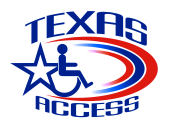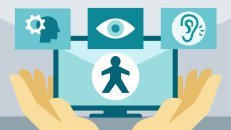New Zealand Digital Accessibility Laws and Policies
Don’t get it confused, Australia and New Zealand do not directly share the same digital accessibility laws. New Zealand ensures barrier-free access to digital content through:
- Human Rights Act 1993, including amendments
- Online Practice Guidelines
- UNCRPD
Quick facts about the New Zealand Digital Accessibility Laws
- What it covers: Websites, mobile applications, and web content to meet the WCAG 2.1 Level AA.
- Who must comply: Affects all New Zealand government agencies.
- Penalty scheme: Non-compliance with the laws may result in legal and financial penalties and negative publicity.
Over 25% of New Zealanders suffer from one form of disability.
This is according to the 2013 New Zealand Disability Survey which estimated that over 1.1 million in New Zealand are disabled This means 1 in 4 New Zealanders is suffering from physical, sensory, learning, mental health, or other impairment that could affect the use of the web.
New Zealand Human Rights Act 1993 and the Bill of Rights Act 1990
Administered by the New Zealand Ministry of Justice and Human Rights Commission, the Human Rights Act 1993 is a non-discrimination law that prohibits discrimination on multiple bases, including disability. It applies to all branches of the Government of New Zealand, related persons and bodies, or persons or bodies acting with legal authority. Similar to the Equality Act in the UK, It seeks to advance equality of opportunity by prohibiting discrimination on the grounds of:
- disability,
- color
- race
- ethnic or national origins,
- employment status
- religious belief,
- ethical belief,
- age,
- marital status,
- sex, which includes pregnancy and childbirth
- political opinion,
- sexual orientation, and
- family status.
Check out this article on UK Accessibility Laws
The Act classifies disability as being either physically or mentally impaired. It covers persons with physical and psychiatric illnesses, and persons with physical, visual, motor, cognitive, or learning impairments. The Human Rights Act 1993 effectively addresses human rights and discrimination by prohibiting discrimination in the provision of goods, facilities, or services to the public or any section of the public. Although an effective legislative tool, the Act goes beyond online resources and doesn’t address web accessibility. Hence, it doesn’t reference web accessibility nor references the international standard for web accessibility- the Web Content Accessibility Guidelines (WCAG).
Online Practice Guidelines
Online Practice Guidelines were enacted as a mandatory policy in 2003 by New Zealand’s Department of Internal Affairs to propagate the need for government organizations to implement web accessibility best practices. The guidelines consist of different standards and guidance among which are the Web Accessibility Standard 1.1 and Web Usability Standard 1.3.
To deliver more accessible experiences to disabled people such as those with low vision, cognitive or dexterity impairments, and assistive technology users, the New Zealand Government Web Accessibility Standard moves from Web Accessibility Standard 1.0 (enacted 2013) which is based on Web Content Accessibility Guidelines (WCAG) 2.0 to the Web Accessibility Standard 1.1 (enacted 2019).
Web Accessibility Standard 1.1 is part of the New Zealand Web Standard and it mandates all public service and non-public service agencies to meet the NZ Government Web Accessibility Standard from 1 July 2019. The Web Accessibility Standard 1.1 replaces the New Zealand Government Web Accessibility Standard 1.0. and is based on the Web Content Accessibility Guidelines (WCAG) 2.1 Level AA.
The new standard demands every website and web page, produced or maintained, in part or in whole, by the New Zealand government organization, excluding archived web pages to meet WCAG 2.1 Level AA except:
- Complex visual maps that associate information with data points or shapes that cannot reasonably be represented by common identifiers (are exempt from providing text alternatives).
- Alternatives for time-based media (descriptive text transcripts)
- Live synchronized media that does not present high-stakes information or services
- All synchronized media are exempt from providing audio descriptions for all prerecorded video content in the media.
Each Agency to which the Web Accessibility Standard 1.1 (and Web Usability Standard 1.3) applies must be prepared to assess and report on its conformance upon notification and in the case of non-conformance, submit a risk assessment and management plan regarding any areas of non-conformance. As a warning, the Department of Internal Affairs ordered the submission of Self-Assessments by Government agencies in 2011, 2014, and 2017.
United Nations’ Convention on the Rights of Persons with Disabilities (UNCRPD)
The United Nations Convention is an international treaty that ensures the rights of people with disabilities. The UN legislation under Article 9 recognizes the rights of disabled people to access information and communications, including information and communications technologies and systems. Article 21 also gives the right to freedom of expression and opinion to those with disabilities, granting them an equal opportunity with others to participate. Like it applies to Australia’s Web Accessibility Laws, the UNCRP has also been ratified by the New Zealand government.
Although the New Zealand Government Web Standard explicitly mandates public service and non-public service departments in the State Services to meet WCAG 2.1 at level AA success criteria (subject to a few exceptions), other State sector organizations are strongly encouraged to implement the Standard. This is due to the country’s legislation -Human Rights Act 1993, Bill of Rights Act 1990’s ratification of the United Nations Convention on the Rights of Persons with Disabilities. The UN legislation expects the websites of all government organizations to be accessible to the public, including people with disabilities.
Compliance
Providing disabled access to websites and applications, not only benefits people with disabilities but old people. 35% of disabled people in New Zealand are over 65 years old – that’s 370,000 people, and this number will continue to grow due to an increase in life expectancy. The NZ Government Web Standards have moved to ensure that 25% of the country’s population have equal access by demanding public organizations to make websites accessible.
In other words, complying with the international web accessibility checklist will fulfill obligations. Governmental entities in New Zealand must their website (including smaller sub-sites such as an online shop, an area for each department within the organization, and a blog area) and web page (including web applications, web services, and single-page applications) comply with Web Content Accessibility Guidelines (WCAG) 2.1 Level AA standards (subject to the exceptions).







